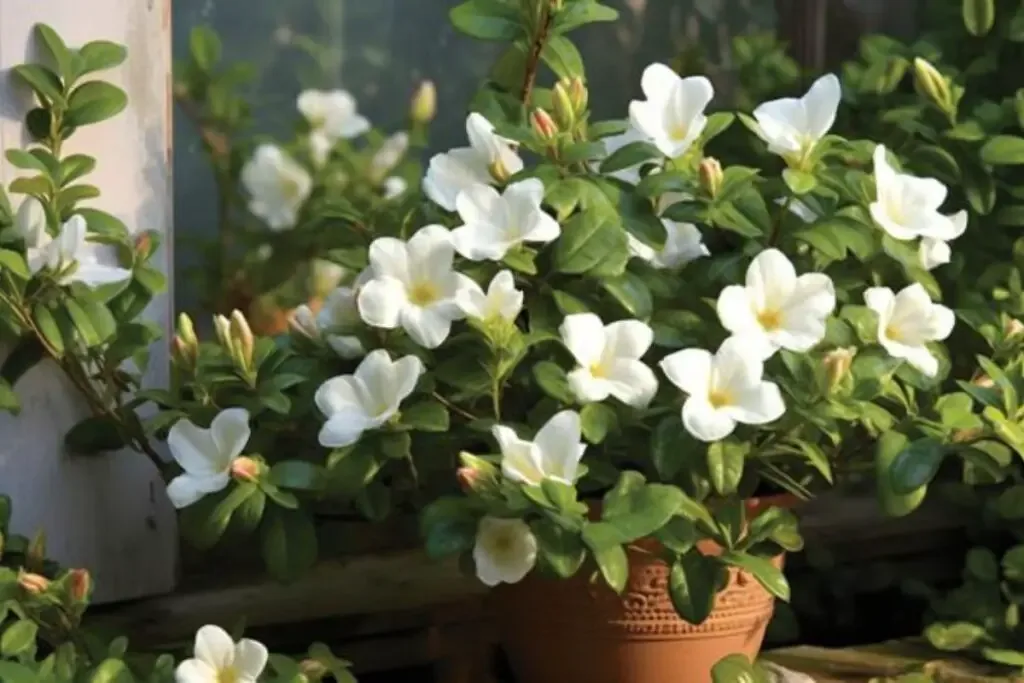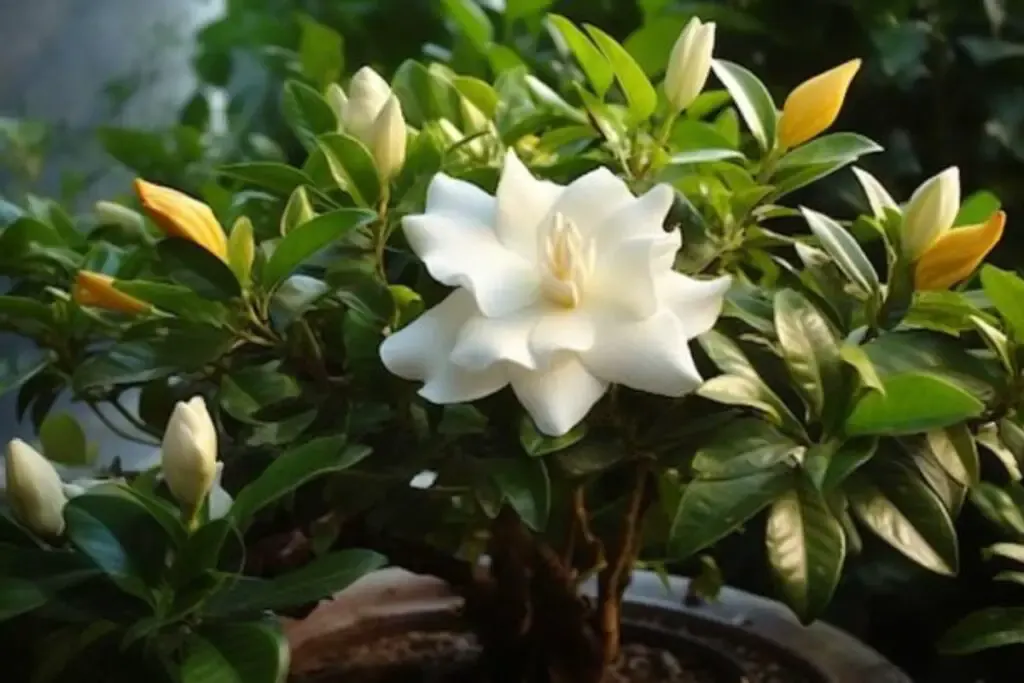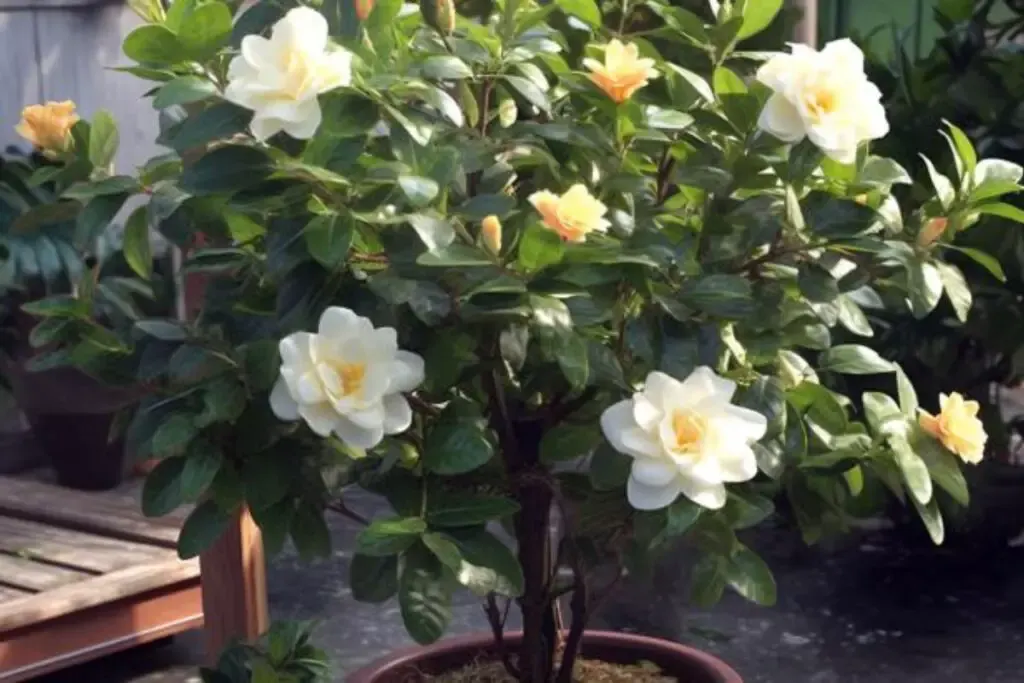Gardenias, with their lush foliage and intoxicatingly fragrant blooms, are a favorite among garden enthusiasts. Often regarded as a symbol of purity and sweetness, these enchanting flowers bring a sense of tranquility and old-world charm to any space.
Fortunately, for those with limited garden space, gardenias thrive beautifully in pots, making it possible for anyone to enjoy their splendor.
As a seasoned gardening blogger, I’m excited to share with you the secrets of growing gardenias in containers, transforming your balcony, patio, or indoor space into a fragrant paradise.
Do Gardenias Grow Well in Pots?
Gardenias are often thought of as finicky plants, but they adapt remarkably well to pot culture with the right care. Growing gardenias in pots allows for better control over the conditions they’re exposed to. This is crucial for gardenias, which require specific soil acidity, consistent moisture, and stable temperatures.
Pots also offer the flexibility to move your gardenias to ideal locations as the seasons change. With attentive watering, feeding, and pruning, your potted gardenias can become a stunning feature in your home or garden.
Best Gardenia Varieties for Pots
When it comes to choosing gardenias for pot culture, not all varieties are created equal. Some are more suited to container living, often because of their size, growth habit, or resilience.
Let’s explore three varieties that are particularly well-adapted to thrive in pots.
1. Gardenia jasminoides ‘Kleim’s Hardy’

‘Kleim’s Hardy’ is a compact variety of gardenia that is well-suited to pot culture. Its small size makes it ideal for container growing, and as the name suggests, it’s more cold-hardy than many other gardenia varieties.
This makes it a great choice for gardeners in slightly cooler climates. It blooms with beautiful, star-shaped flowers and is known for its ability to withstand brief cold snaps better than most gardenias.
2. Gardenia ‘Radicans’

Gardenia ‘Radicans’ is a dwarf variety that’s perfect for small spaces. Its petite size and spreading habit make it an excellent choice for pots, hanging baskets, or as a cascading plant on a high shelf.
Despite its small stature, ‘Radicans’ offers an abundance of fragrant, creamy-white flowers and glossy green leaves, adding a touch of elegance to any setting.
3. Gardenia ‘Aimee Yoshioka’

‘Aimee Yoshioka’ is a larger gardenia variety that thrives in pots. It produces large, velvety flowers that are known for their intense fragrance. This variety is perfect for those who want a more impactful presence in their potted garden.
‘Aimee Yoshioka’ requires a bit more space due to its size, but it rewards the effort with show-stopping blooms and a captivating scent.
How to Grow and Care For Gardenias in Pots
Growing gardenias in pots is both an art and a science, combining careful attention to their needs with a touch of gardening intuition. Here are key steps and tips to ensure your potted gardenias not only survive but flourish.
Planting
Planting your gardenia in the right soil is crucial for its success. Use a well-draining, acidic potting mix and ensure the top of the root ball is slightly above the soil line. Gently firm the soil around the plant, but avoid compacting it. This simple yet important step sets the stage for your gardenia’s lush growth and blooming.
Pot Size
Gardenias need well-draining soil, so select a pot with adequate drainage holes. Opt for a container that’s slightly larger than the root ball of your gardenia, as too large a pot can lead to waterlogging. Terracotta or ceramic pots are ideal because they allow the soil to breathe.
Light
These plants love bright, indirect sunlight. Place your potted gardenia where it can receive morning sunlight and afternoon shade, especially in hotter climates. Too much direct sun can burn the leaves, while too little will inhibit flowering.
Soil
Gardenias prefer acidic soil with a pH between 5 and 6. Use a high-quality potting mix designed for acid-loving plants, or mix your own with equal parts peat, pine bark, and perlite. Plant your gardenia at the same depth it was in its nursery pot, and ensure the top of the root ball is slightly above the soil line to prevent rot.
Water
Gardenias require consistently moist soil, but it’s crucial to avoid overwatering. Water when the top inch of soil feels dry to the touch. Using room temperature water, thoroughly soak the soil until water runs out of the drainage holes. Never let the pot sit in water, as this can lead to root rot.
Temperature and Humidity
This plant thrives in high humidity and prefers temperatures between 65 and 75 degrees Fahrenheit. In drier environments, increase humidity by placing the pot on a tray of wet pebbles or using a humidifier.
Fertilizer
Nurturing your gardenias with the right fertilizer is akin to providing a balanced diet. Opt for an acid-formulated fertilizer, crucial for their growth. Apply it every couple of weeks in spring and summer to encourage robust blossoms and vibrant leaves. It’s the secret ingredient for a thriving gardenia in your pot.
Pruning Potted Gardenias
Pruning your gardenia is akin to giving it a rejuvenating spa treatment. Trim it lightly after the main bloom season, focusing on dead or weak branches to promote healthy growth. This process, done in late summer or early fall, encourages a fuller and more robust plant.
By carefully shaping your gardenia, you’re not only maintaining its beauty but also ensuring a splendid bloom in the next season. Keep your snips gentle and your plant will thank you with vibrant health and flowers.
Overwintering
As colder weather approaches, transition your plant indoors to a space with ample light but away from direct heat sources, mimicking its natural cool, bright habitat. During these months, your gardenia enters a rest phase, requiring less water – let the soil dry out a bit between waterings.
Humidity is crucial, as indoor heating can dry out the air, so consider a pebble tray or humidifier nearby. Regularly check for pests, a common issue in winter, and address any infestations immediately.
This period of rest is not just about survival; it’s about setting the stage for your gardenia to burst into spring with renewed vigor and stunning blooms.
Remember, a little extra attention in the winter can lead to a flourishing gardenia once the warmer weather returns.

